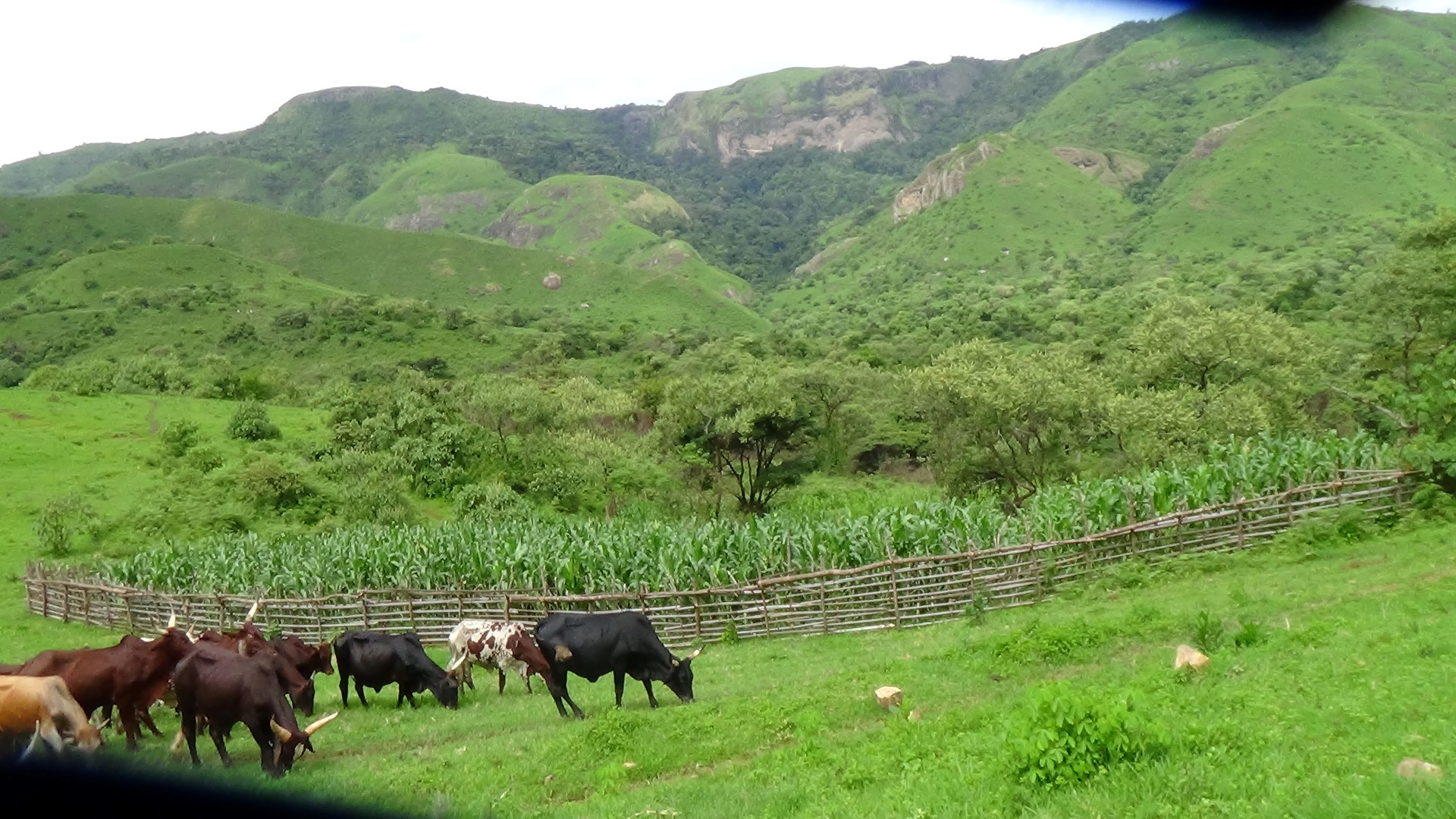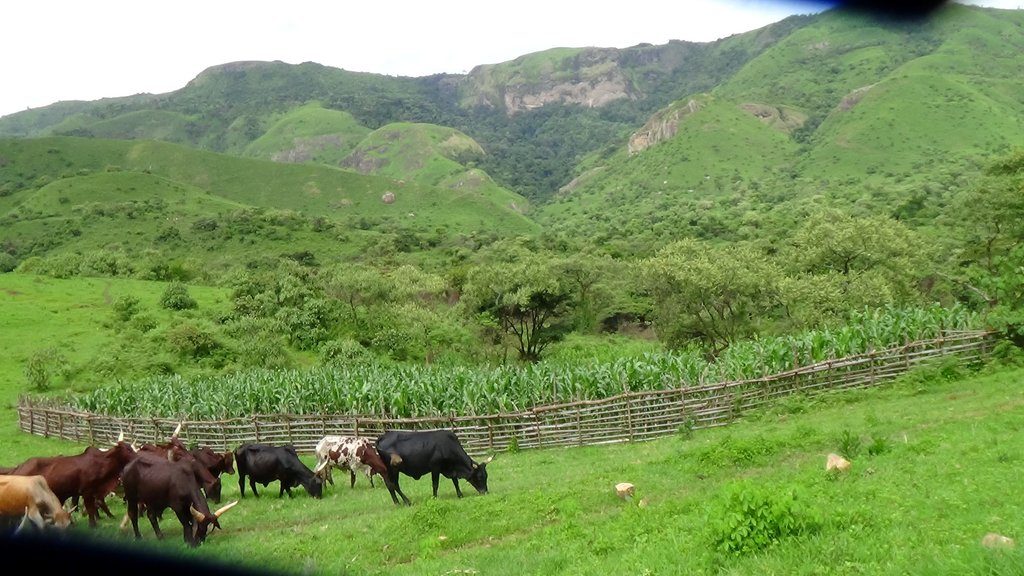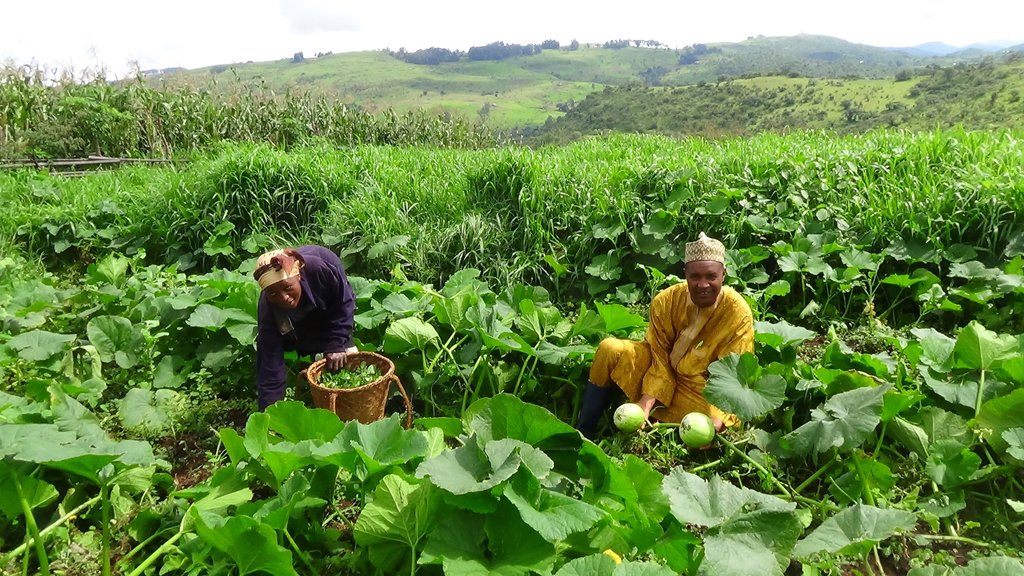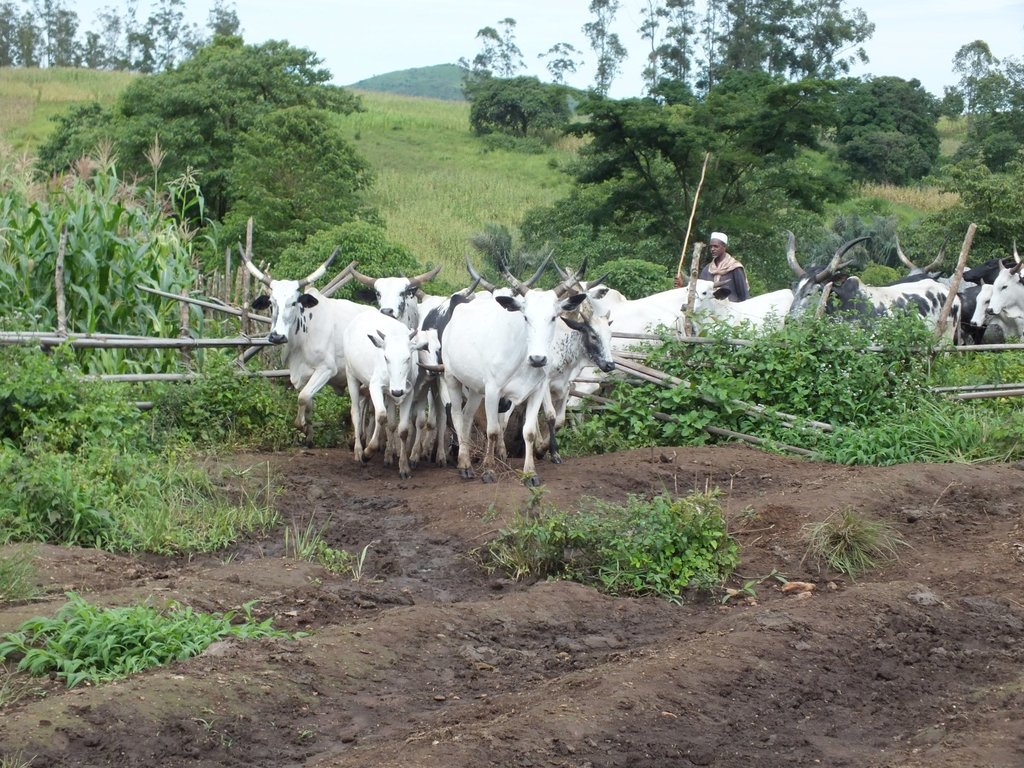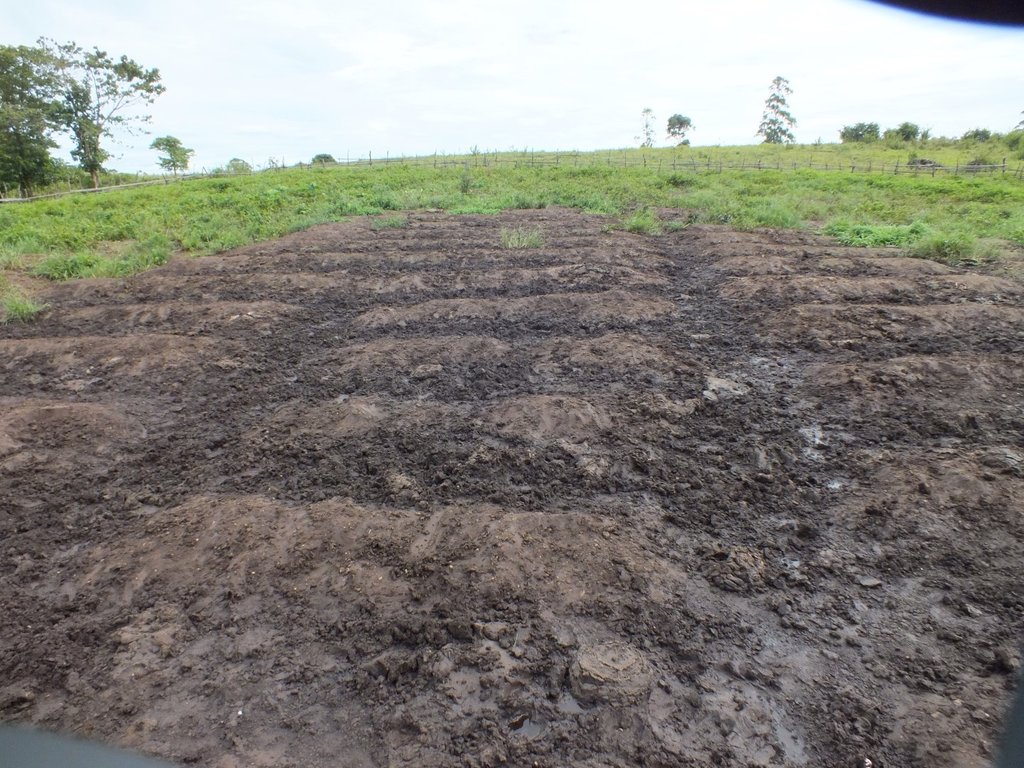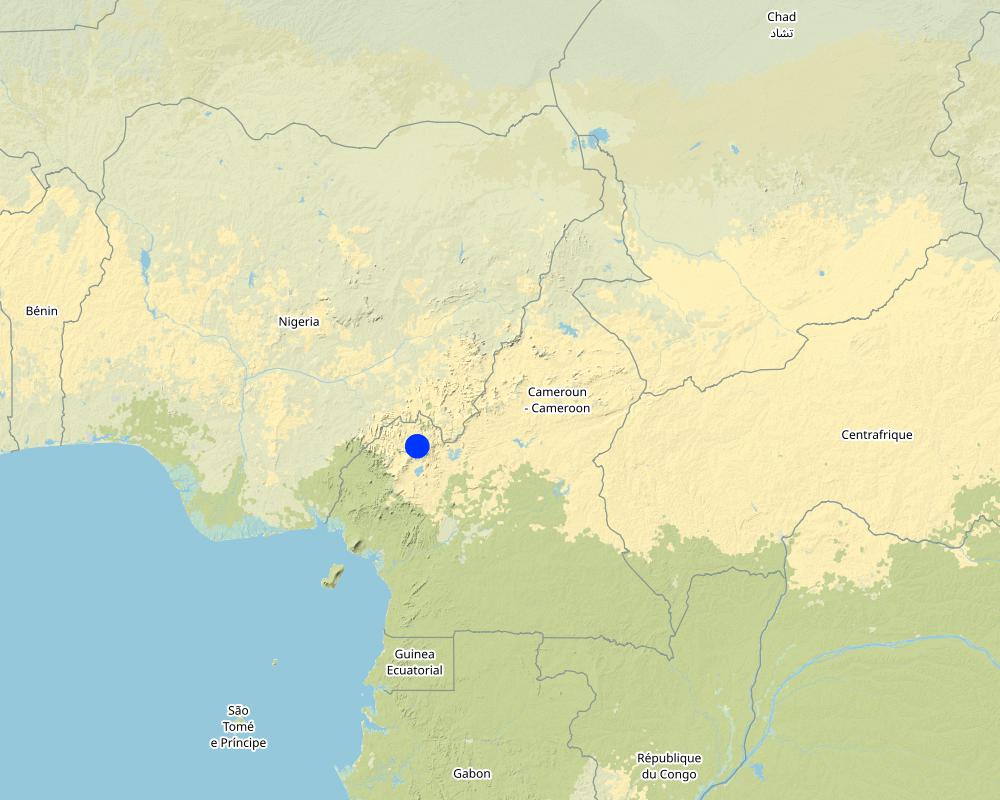Alliance Farming [Cameroon]
- Creation:
- Update:
- Compiler: Blasius Azuhnwi
- Editor: –
- Reviewers: Alexandra Gavilano, Rima Mekdaschi Studer, Brigitte Zimmermann, Donia Mühlematter, Joana Eichenberger
Alliance Farming
technologies_3342 - Cameroon
View sections
Expand all Collapse all1. General information
1.2 Contact details of resource persons and institutions involved in the assessment and documentation of the Technology
SLM specialist:
Jiedoh Duni
MBOSCUDA
Cameroon
SLM specialist:
Sali Usmanu Mallam
MBOSCUDA
Cameroon
SLM specialist:
Hammadu Bawuro Abubakar
MBOSCUDA
Cameroon
Name of project which facilitated the documentation/ evaluation of the Technology (if relevant)
In Search of Common GroundName of project which facilitated the documentation/ evaluation of the Technology (if relevant)
Book project: Guidelines to Rangeland Management in Sub-Saharan Africa (Rangeland Management)Name of the institution(s) which facilitated the documentation/ evaluation of the Technology (if relevant)
Mbororo Social and Cultural Development Association (MBOSCUDA) - Cameroon1.3 Conditions regarding the use of data documented through WOCAT
The compiler and key resource person(s) accept the conditions regarding the use of data documented through WOCAT:
Yes
1.4 Declaration on sustainability of the described Technology
Is the Technology described here problematic with regard to land degradation, so that it cannot be declared a sustainable land management technology?
No
1.5 Reference to Questionnaire(s) on SLM Approaches (documented using WOCAT)
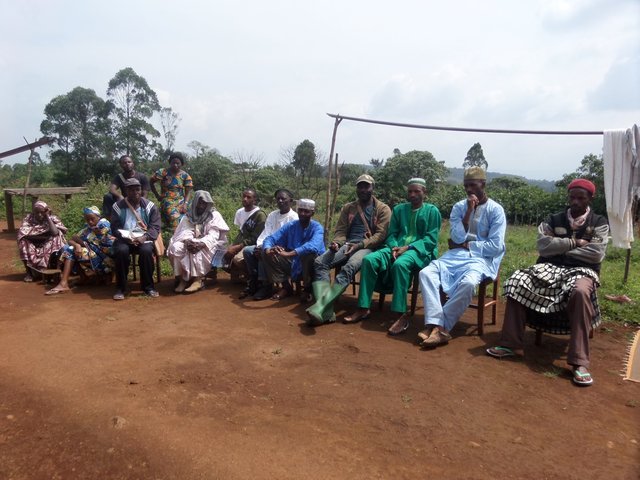
Promoting farmers and pastoralists consultations in managing rangelands. [Cameroon]
Dialogue platforms bring together rangeland users including farmers, pastoralists/agro pastoralists to learn, discuss and implement low stake conflict mitigation strategies and mutually beneficial alliances.
- Compiler: Blasius Azuhnwi
2. Description of the SLM Technology
2.1 Short description of the Technology
Definition of the Technology:
Alliance farming refers to collaboration between crop farmers and pastoralists, who agree to use the same land and related resources (crop residues as fodder for pastoralists; dung as fertilizer for crop farmers) for their mutual benefit.
2.2 Detailed description of the Technology
Description:
Alliance farming is partnership between pastoralists and subsistence farmers to share resources. They agree to use the same land and related resources sequentially: growing crops during the rains, and grazing cattle in the dry season. It is a further development of the conflict mediation process under which cattle are allowed to graze on cropland after harvest. The cattle consume crop residues and weeds (including some grass) on the farm and they produce dung and urine in turn, which increases nitrogen content and organic matter in the soil. This enhances its fertility and makes it more productive for the next round of crop cultivation. The crops grown are mainly annuals including maize, beans, soybeans and groundnuts. The livestock are mainly zebu cattle for beef (Bos indicus). There exists several variants (or components) of this arrangement: 1) The farmer constructs a night paddock (a corral) in farmland and invites pastoralists to kraal their animals in the paddock overnight; 2) The farmer arranges with the pastoralist to farm on areas where animals have been held overnight, in grazing land – and constructs a fence to protect the crops; 3) In communities where transhumance is common, the farmer allows a pastoralist to graze his cattle on crop residues remaining after harvest; 4) Pastoralists allow farmers to collect dung and apply it in their farms. Contracts for the most part are verbal and non-written, and each party counts on the good conscience and honesty of the other.
2.3 Photos of the Technology
General remarks regarding photos:
4 different photos showing pastoralists and farmers who are benefiting from this technology have been provided.
2.4 Videos of the Technology
Comments, short description:
There are two videos of this technology available but each is about 125 MB and just too heavy to be uploaded on to this site.
Location:
n.a
Name of videographer:
n.a
2.5 Country/ region/ locations where the Technology has been applied and which are covered by this assessment
Country:
Cameroon
Region/ State/ Province:
North West Region
Further specification of location:
This approach has been piloted in 23 communities in the North West Region.
Specify the spread of the Technology:
- applied at specific points/ concentrated on a small area
Comments:
Presently common in pilot villages/communities.
Map
×2.6 Date of implementation
Indicate year of implementation:
2011
If precise year is not known, indicate approximate date:
- less than 10 years ago (recently)
2.7 Introduction of the Technology
Specify how the Technology was introduced:
- as part of a traditional system (> 50 years)
- through projects/ external interventions
Comments (type of project, etc.):
Some aspects of this technology were already in practise in the region over the decades but due the facilitation of Mbororo Social and Cultural Development Association (MBOSCUDA) this technology is being adopted now by many locals
3. Classification of the SLM Technology
3.1 Main purpose(s) of the Technology
- improve production
- reduce, prevent, restore land degradation
- conserve ecosystem
- protect a watershed/ downstream areas – in combination with other Technologies
- create beneficial social impact
3.2 Current land use type(s) where the Technology is applied
Land use mixed within the same land unit:
Yes
Specify mixed land use (crops/ grazing/ trees):
- Agro-pastoralism (incl. integrated crop-livestock)

Cropland
- Annual cropping
Annual cropping - Specify crops:
- cereals - maize
- legumes and pulses - beans
- legumes and pulses - soya
- oilseed crops - groundnuts
Number of growing seasons per year:
- 1
Specify:
Usually one growing season.

Grazing land
Extensive grazing:
- Nomadism
- Semi-nomadic pastoralism
- zebu cattle
Comments:
Main animal species and products: Zebu cattle under extensive production which produce dung and urine.
Main products/ services: Annuals such as maize, beans, soybeans and groundnuts, while livestock kept under extensive system of production produce dung and urine to enrich the soil.
3.3 Has land use changed due to the implementation of the Technology?
Has land use changed due to the implementation of the Technology?
- Yes (Please fill out the questions below with regard to the land use before implementation of the Technology)
Comments:
Land use is changing due to the use of this technology but this change is principally driven by the increasing demographics. Through the use of this technology, much more rangelands is being cultivated for crop production
3.4 Water supply
Water supply for the land on which the Technology is applied:
- rainfed
Comments:
This is a very low-input land use.
3.5 SLM group to which the Technology belongs
- pastoralism and grazing land management
- integrated crop-livestock management
- integrated soil fertility management
3.6 SLM measures comprising the Technology

agronomic measures
- A1: Vegetation/ soil cover
- A2: Organic matter/ soil fertility

vegetative measures
- V2: Grasses and perennial herbaceous plants
- V4: Replacement or removal of alien/ invasive species

structural measures
- S6: Walls, barriers, palisades, fences

management measures
- M1: Change of land use type
- M4: Major change in timing of activities
3.7 Main types of land degradation addressed by the Technology

chemical soil deterioration
- Cn: fertility decline and reduced organic matter content (not caused by erosion)

biological degradation
- Bc: reduction of vegetation cover
3.8 Prevention, reduction, or restoration of land degradation
Specify the goal of the Technology with regard to land degradation:
- reduce land degradation
- restore/ rehabilitate severely degraded land
Comments:
Some degraded land is being rehabilitated as pastoralists do invite farmers to come farm in the rangelands which have been invaded by braken fern. By tilling of the soil and removing the rhizomes in them, the spread of the invasive species is being put to check.
4. Technical specifications, implementation activities, inputs, and costs
4.1 Technical drawing of the Technology
Technical specifications (related to technical drawing):
• Alliance farming is an advanced outcome of the conflict mediation process whereby cattle are allowed to graze on crop lands after harvest.
• Livestock consume crop residues and weeds (including grass).
• When the land is used to paddock cattle, their manure and urine fertilize the soil making it more productive when the crop farmers return to cultivate.
• Crops are planted on the plot of land once the cattle are taken away.
Author:
MBOSCUDA North West Region Cameroon
Date:
13/01/2018
4.2 General information regarding the calculation of inputs and costs
Specify how costs and inputs were calculated:
- per Technology area
Indicate size and area unit:
0.5 hectares
other/ national currency (specify):
FCFA
Indicate average wage cost of hired labour per day:
1500 FCFA
4.3 Establishment activities
| Activity | Timing (season) | |
|---|---|---|
| 1. | Farmer harvests annual crop e.g. maize, beans | At the end of growing season which is usually in October |
| 2. | Farmer invites pastoralist to bring herd to graze off crop residues | After harvest of crops in Octorber |
| 3. | Cattle graze on crop residues and weeds on farm | During grazing in the dry season from mid-November onwards |
| 4. | Dung and faeces passed out by animal increases N content of soil | During grazing, mostly in the dry season mid-November to mid-March. |
| 5. | Pastoralist takes animals away from farm | At the beginning of the rains in mid-March. |
| 6. | Farmer then returns to till soil and plant annual crops in the field | At the beginning of the growing season by mid-March. |
Comments:
This is actually a low input technology.
4.4 Costs and inputs needed for establishment
If land user bore less than 100% of costs, indicate who covered the remaining costs:
Land users bore all of the costs
Comments:
A low input technology.
4.5 Maintenance/ recurrent activities
| Activity | Timing/ frequency | |
|---|---|---|
| 1. | n.a. |
Comments:
There are no maintenance costs.
4.6 Costs and inputs needed for maintenance/ recurrent activities (per year)
If land user bore less than 100% of costs, indicate who covered the remaining costs:
n.a.
4.7 Most important factors affecting the costs
Describe the most determinate factors affecting the costs:
The only costs pertain to herding the animal to farmer's farm which is done by pastoralist or his a herder he has paid
5. Natural and human environment
5.1 Climate
Annual rainfall
- < 250 mm
- 251-500 mm
- 501-750 mm
- 751-1,000 mm
- 1,001-1,500 mm
- 1,501-2,000 mm
- 2,001-3,000 mm
- 3,001-4,000 mm
- > 4,000 mm
Specifications/ comments on rainfall:
It is a uni-modal in nature with rains coming in by mid March and going by mid October.
Indicate the name of the reference meteorological station considered:
Institute of Agricultural Research for Development
Agro-climatic zone
- sub-humid
Sub-humid climate with mainly sudan savana characterized by undulating hills and short grass species interspersed with shrubs.
5.2 Topography
Slopes on average:
- flat (0-2%)
- gentle (3-5%)
- moderate (6-10%)
- rolling (11-15%)
- hilly (16-30%)
- steep (31-60%)
- very steep (>60%)
Landforms:
- plateau/plains
- ridges
- mountain slopes
- hill slopes
- footslopes
- valley floors
Altitudinal zone:
- 0-100 m a.s.l.
- 101-500 m a.s.l.
- 501-1,000 m a.s.l.
- 1,001-1,500 m a.s.l.
- 1,501-2,000 m a.s.l.
- 2,001-2,500 m a.s.l.
- 2,501-3,000 m a.s.l.
- 3,001-4,000 m a.s.l.
- > 4,000 m a.s.l.
Indicate if the Technology is specifically applied in:
- not relevant
5.3 Soils
Soil depth on average:
- very shallow (0-20 cm)
- shallow (21-50 cm)
- moderately deep (51-80 cm)
- deep (81-120 cm)
- very deep (> 120 cm)
Soil texture (topsoil):
- coarse/ light (sandy)
Soil texture (> 20 cm below surface):
- medium (loamy, silty)
Topsoil organic matter:
- medium (1-3%)
5.4 Water availability and quality
Ground water table:
5-50 m
Availability of surface water:
medium
Water quality (untreated):
good drinking water
Is water salinity a problem?
No
Is flooding of the area occurring?
No
5.5 Biodiversity
Species diversity:
- medium
Habitat diversity:
- medium
5.6 Characteristics of land users applying the Technology
Sedentary or nomadic:
- Sedentary
- Semi-nomadic
Market orientation of production system:
- subsistence (self-supply)
- mixed (subsistence/ commercial)
Off-farm income:
- less than 10% of all income
- 10-50% of all income
Relative level of wealth:
- poor
- average
Individuals or groups:
- individual/ household
- groups/ community
Level of mechanization:
- manual work
Gender:
- women
- men
Age of land users:
- youth
- middle-aged
Indicate other relevant characteristics of the land users:
The land users are predominantly resource poor livestock and crop farmers.
5.7 Average area of land used by land users applying the Technology
- < 0.5 ha
- 0.5-1 ha
- 1-2 ha
- 2-5 ha
- 5-15 ha
- 15-50 ha
- 50-100 ha
- 100-500 ha
- 500-1,000 ha
- 1,000-10,000 ha
- > 10,000 ha
Is this considered small-, medium- or large-scale (referring to local context)?
- medium-scale
5.8 Land ownership, land use rights, and water use rights
Land ownership:
- communal/ village
- individual, not titled
Land use rights:
- open access (unorganized)
- leased
Water use rights:
- open access (unorganized)
- communal (organized)
5.9 Access to services and infrastructure
health:
- poor
- moderate
- good
education:
- poor
- moderate
- good
technical assistance:
- poor
- moderate
- good
employment (e.g. off-farm):
- poor
- moderate
- good
markets:
- poor
- moderate
- good
energy:
- poor
- moderate
- good
roads and transport:
- poor
- moderate
- good
drinking water and sanitation:
- poor
- moderate
- good
financial services:
- poor
- moderate
- good
6. Impacts and concluding statements
6.1 On-site impacts the Technology has shown
Socio-economic impacts
Production
crop production
Quantity before SLM:
0
Quantity after SLM:
2
Comments/ specify:
Improved soil fertility from dung and urine leads to increase crop production.
crop quality
Quantity before SLM:
0
Quantity after SLM:
1
Comments/ specify:
Improved crop quality as little or no pesticides are used.
fodder production
Quantity before SLM:
0
Quantity after SLM:
2
Comments/ specify:
increase fodder production from crop residues such as maize stover, legume haulms and sweet potato vines.
fodder quality
Quantity before SLM:
0
Quantity after SLM:
2
Comments/ specify:
Farmers do not use chemicals on the crops so quality of resulting crop residues is also good.
animal production
Quantity before SLM:
0
Quantity after SLM:
2
Comments/ specify:
The greater access that the livestock have to crop residues has led to increased animal production.
risk of production failure
Quantity before SLM:
0
Quantity after SLM:
1
Comments/ specify:
The risk of production failure has decreased since farmers have increased the effective sizes of their farm holdings.
production area
Quantity before SLM:
0
Quantity after SLM:
1
Comments/ specify:
Production area has also increased as farmers have increase land area under cultivation mostly when they are invited to come farm in rangelands in order to till the soil and break the cycle of spread of invasive species
land management
Quantity before SLM:
-1
Quantity after SLM:
2
Comments/ specify:
Better land management now with the same land put to multiple uses and more productive than previously i.e. when the two land uses were separated.
Income and costs
farm income
Quantity before SLM:
0
Quantity after SLM:
2
Comments/ specify:
Farm income has increased from improved production and productivity of crops and animals.
diversity of income sources
Quantity before SLM:
0
Quantity after SLM:
2
Comments/ specify:
Income sources have been diversified. With increased income from farms, farmers most especially are going for other off- farm enterprises such as petty trading.
economic disparities
Quantity before SLM:
-1
Quantity after SLM:
1
Comments/ specify:
Economic disparities are being bridged because of the increased income from either livestock production or crop farming.
workload
Quantity before SLM:
-1
Quantity after SLM:
1
Comments/ specify:
Workload is also being eased as farmers and pastoralists are witnessing improved crop and livestock productivity. Farmers, especially, do not have to bring much more new land under cultivation.
Socio-cultural impacts
food security/ self-sufficiency
Quantity before SLM:
-1
Quantity after SLM:
2
Comments/ specify:
Food self-sufficiency of alliance farming practising families has improved from the increase in production.
health situation
Quantity before SLM:
0
Quantity after SLM:
1
Comments/ specify:
From the improved income as a result of increased production and productivity, alliance practitioners have more disposal income to take care of medical bills.
land use/ water rights
Quantity before SLM:
-1
Quantity after SLM:
2
Comments/ specify:
Land use rights especially of pastoralists has improved since farmers now acknowledge that pastoralists do own land. Pastoralists, due to their late arrival in the region, are looked upon as 'strangers' by their farming neighbours. However this perception is changing because of the positive engagement between the these two main land users.
cultural opportunities
Quantity before SLM:
-1
Quantity after SLM:
2
Comments/ specify:
Increase cross-cultural dialogue within the community: pastoralists are predominantly Moslems while crop farmers are mainly Christians.
community institutions
Quantity before SLM:
-1
Quantity after SLM:
2
Comments/ specify:
Community institutions like the Dialogue Platforms have been strengthened, as they have grown in recognition among community members as a low- stake solution to resource use conflicts.
national institutions
Quantity before SLM:
0
Quantity after SLM:
1
Comments/ specify:
Agro-Pastoral Commissions, which are the statutory bodies adjudicating conflicts between farmers and pastoralists, have come to see effectiveness of the Dialogue Platforms and are incorporating the Alternative Conflict Management practices in their modus operandi.
conflict mitigation
Quantity before SLM:
-2
Quantity after SLM:
2
Comments/ specify:
There has been a great decrease in the number, frequency and intensity of the conflicts as the two sets of land users have seen good reason to collaborate instead of antagonize each other.
situation of socially and economically disadvantaged groups
Quantity before SLM:
-1
Quantity after SLM:
2
Comments/ specify:
The self-esteem of the Mbororos who make up the majority of pastoralists community has been improved through this positive engagement with farmers.
Ecological impacts
Soil
nutrient cycling/ recharge
Quantity before SLM:
0
Quantity after SLM:
2
Comments/ specify:
Nutrient cycling has improved as dung and urine are returned to improve soil fertility and help subsequent crops.
soil organic matter/ below ground C
Quantity before SLM:
0
Quantity after SLM:
2
Comments/ specify:
Soil organic matter has also being improved from the increase crop residues which animals do not eat all.
Biodiversity: vegetation, animals
Vegetation cover
Quantity before SLM:
0
Quantity after SLM:
1
Comments/ specify:
Increase soil fertility has meant increase crop cover
biomass/ above ground C
Quantity before SLM:
0
Quantity after SLM:
1
Comments/ specify:
Increase crop yields also mean increase crop biomass
plant diversity
Quantity before SLM:
0
Quantity after SLM:
1
Comments/ specify:
Plant diversity has been somewhat increased due to fertile soils make it possible for different plant species to grow
invasive alien species
Quantity before SLM:
-1
Quantity after SLM:
1
Comments/ specify:
The spread of alien species such as bracken fern on rangelands is being controlled since farmers are being invited by pastoralists to come and cultivate crops on rangelands. The tilling of the soil is a good mechanical method of controlling the spread of these invasive species.
6.2 Off-site impacts the Technology has shown
Specify assessment of off-site impacts (measurements):
n.a.
6.3 Exposure and sensitivity of the Technology to gradual climate change and climate-related extremes/ disasters (as perceived by land users)
Gradual climate change
Gradual climate change
| Season | increase or decrease | How does the Technology cope with it? | |
|---|---|---|---|
| annual rainfall | decrease | not well | |
| seasonal rainfall | wet/ rainy season | decrease | not well |
Climate-related extremes (disasters)
Meteorological disasters
| How does the Technology cope with it? | |
|---|---|
| local rainstorm | not well |
| local hailstorm | not well |
Climatological disasters
| How does the Technology cope with it? | |
|---|---|
| heatwave | not well |
| drought | not well |
| land fire | not well |
Hydrological disasters
| How does the Technology cope with it? | |
|---|---|
| general (river) flood | not well |
Biological disasters
| How does the Technology cope with it? | |
|---|---|
| insect/ worm infestation | not well |
Comments:
Growth of the crops most especially will be affected by climate change events such as droughts or too much rainfall. The crops are C4 crops and so will get very little benefits predicted rise in temperatures associated with climate change.
6.4 Cost-benefit analysis
How do the benefits compare with the establishment costs (from land users’ perspective)?
Short-term returns:
positive
Long-term returns:
positive
How do the benefits compare with the maintenance/ recurrent costs (from land users' perspective)?
Short-term returns:
positive
Long-term returns:
positive
6.5 Adoption of the Technology
- single cases/ experimental
If available, quantify (no. of households and/ or area covered):
More than 800 alliance farming pairs have been facilitated by this process.
Of all those who have adopted the Technology, how many did so spontaneously, i.e. without receiving any material incentives/ payments?
- 0-10%
Comments:
Farmers have not received any incentives from project in order to adopt this.
6.6 Adaptation
Has the Technology been modified recently to adapt to changing conditions?
No
6.7 Strengths/ advantages/ opportunities of the Technology
| Strengths/ advantages/ opportunities in the land user’s view |
|---|
| Technology leads to increased crop yields because of the improved soil fertility. |
| Technology leads to improved crop quality because of the use of organic manure and less chemicals fertilizers. The use of chemical fertilizers can lead to leaching of inorganic nutrients into ground water, and also eutrophication of water bodies. |
| It has led to stronger social relationships between farmers and pastoralists. |
| Invasive species such as Pteridium aquilinium (bracken fern) that has invaded rangelands is being controlled. Tilling of the farms is a mechanical method of stopping its growth and spread. |
| Strengths/ advantages/ opportunities in the compiler’s or other key resource person’s view |
|---|
| More productive use of land than when two land uses were separate. |
| More environmentally friendly since organic manure is being used. |
6.8 Weaknesses/ disadvantages/ risks of the Technology and ways of overcoming them
| Weaknesses/ disadvantages/ risks in the land user’s view | How can they be overcome? |
|---|---|
| The ratio of pastoralists to farmers is really low (about 1:6) meaning that there are not many pastoralists to form Alliance Farming pairs with willing farmers. | Increasing herd sizes to ensure more production of manure could alleviate this problem. |
| Weaknesses/ disadvantages/ risks in the compiler’s or other key resource person’s view | How can they be overcome? |
|---|---|
| Agreements are verbal. | Formalizing the contracts. |
| Some variants of the technology, for example that in which pastoralists allow farmers to collect dung to go to farm in another area may lead to nutrient export. The dung does not contribute to improve the fertility of the soil where it was collected but does so at a different site where farming will take place. There is no net loss of nutrients out of the whole system though. | Transportation of dung to different sites should be discouraged. Farming should take place as much as possible on the farm that supplied crop residues to feed the animals. |
7. References and links
7.1 Methods/ sources of information
- field visits, field surveys
4 field visits were done.
- interviews with land users
About 30 people were contacted during focus group discussions and key informant interviews.
- interviews with SLM specialists/ experts
4 SLM specialists were contacted.
- compilation from reports and other existing documentation
Secondary data sources were consulted.
When were the data compiled (in the field)?
03/12/2018
7.2 References to available publications
Title, author, year, ISBN:
MBOSCUDA Searchlight Magazine Vols 1, 2,3. 2014, 2015, 2016
Available from where? Costs?
Free copies
Title, author, year, ISBN:
Blasius Azuhnwi and Fiona Flintan (2017)- Making Rangelands Secure, Issue Paper 8, Rangelands Series
Available from where? Costs?
From ILC Rome for free
7.3 Links to relevant online information
Title/ description:
n.a.
Links and modules
Expand all Collapse allLinks

Promoting farmers and pastoralists consultations in managing rangelands. [Cameroon]
Dialogue platforms bring together rangeland users including farmers, pastoralists/agro pastoralists to learn, discuss and implement low stake conflict mitigation strategies and mutually beneficial alliances.
- Compiler: Blasius Azuhnwi
Modules
No modules


